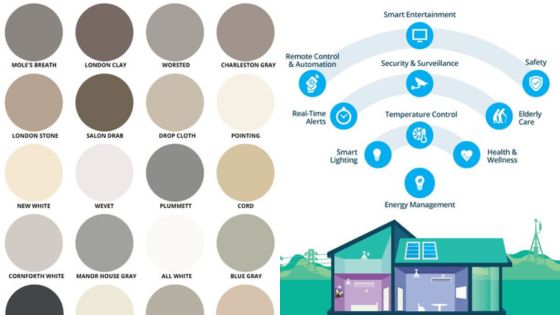

Portraiture is a unique art form that distinguishes itself from other photography styles by its singular focus on capturing the essence of individuals. It invites a deeper exploration of human emotion and identity, challenging photographers to connect with their subjects and reveal their stories through the lens. Even though portraits have a simplicity to them, photographers can apply a range of creative techniques to transform standard portraits into masterpieces.
In this article, we’ll delve into several innovative tips that can help portrait photographers, like you, refine their craft and create stunning portraits that captivate and inspire.
Choose the Right Location
The location of a portrait shoot can significantly influence the tone and overall feel of the final image. The right setting can highlight the subject’s personality, making the portrait feel more engaging and authentic. Whether indoors or outdoors, the environment should complement the individual being photographed to keep the essence of the portrait intact.
If you decide to have your photoshoot outdoors, choose a location that can elevate the visual appeal of your portraits. For instance, parks, beaches, and urban streets provide a variety of textures and backgrounds that can enhance the composition. The outdoors also gives you plenty of opportunities to use natural light to your advantage. The so-called golden hours during the early morning or late afternoon, in particular, are the perfect times for portrait photography. When used strategically, the soft, diffused natural light during these times can add flattering and warm tones to your portrait.
If you plan to have your photoshoot indoors, one of the best approaches is to search for a “photo studio near me” online and rent the space for the duration of the session. Most photo studios will have a variety of professional photography equipment for rent, such as reflectors, diffusers, and studio lights, giving you better control over the lighting and ambience of your compositions. You can also hold the photoshoot in your subject’s home, a museum, or even a café. These locations can provide a unique atmosphere that adds a sense of character to the portrait.
Incorporate Unique Backgrounds


A well-considered background can elevate the overall impact of a portrait. Instead of relying on plain or generic settings, a creative background can help frame the subject and make the image feel more intentional. When shooting outdoors, take advantage of natural elements like trees, walls covered in ivy, or interesting architectural features like arches and pergolas to provide your photos with depth and context. However, you have to make sure that the background isn’t overly busy so that the attention remains on the subject.
For an indoor photoshoot, it’s ideal to curate your backgrounds in a way that improves the ambience of the portrait. Using a bookshelf, a decorated wall, or a large window, for instance, can serve as an artistic backdrop that can enrich the narrative of the photo and reflect your subject’s individuality. If you’re working in a studio, experiment with different materials, such as soft curtains, painted canvases, or textured paper backdrops, to give the portrait a more unique composition.
Consider the Colour Palette
The colour palette you use in your portrait can profoundly affect its mood and impact. Through thoughtful consideration of colours—both in the subject’s clothing and the background—you can create harmony, contrast, or a specific emotional tone that enhances the photograph. Moreover, a well-coordinated colour scheme draws the viewer’s eye and reinforces the essence of the subject.


To create a sense of unity in the portrait, you can use colours that complement each other. This can be achieved by selecting clothing that reflects the colours found in the background or by using analogous colours, which are those that are next to each other on the colour wheel. As an example, warm tones like oranges and yellows can evoke a sense of warmth and friendliness; meanwhile, cooler tones like blues and greens can create a calm, serene atmosphere.
Alternatively, you can employ contrasting colours to produce striking visual effects that command attention. A subject dressed in bright red against a muted grey background can create a powerful focal point. This contrast can convey energy and vibrancy, making the portrait more dynamic. When using contrasting colours, however, it’s essential to maintain balance to avoid overwhelming the viewer with too many bold colours. A useful guideline is to limit the palette to one or two standout colours alongside neutral shades to keep the portrait visually engaging without becoming chaotic.
Experiment with Angles
The angle from which a portrait is taken can dramatically alter its perception and impact. Shooting from a low angle can give the subject a more powerful, commanding presence, making them appear taller and more confident. This technique works particularly well for portraits where the subject is meant to convey strength or authority. Shooting from a high angle, on the other hand, creates a sense of vulnerability or innocence, making the subject appear smaller in the frame. This can be effective for capturing children or in portraits aiming to evoke a softer, more intimate emotion.


There are no hard-and-fast rules on how to angle your photos, so don’t be afraid to experiment. This can help you find unique camera perspectives that can introduce a sense of movement, depth, and creativity that elevates your portraits.
Highlight Genuine Emotions
If you’re able to capture them on camera, powerful, genuine emotions can transform a simple photograph into a compelling narrative. However, having your subject feel comfortable during a photoshoot to express themselves isn’t always easy. Nervousness or self-consciousness can hinder them from showing their authenticity.


As such, it’s crucial to establish a comfortable and relaxed atmosphere during the shoot. Taking the time to engage with the subject can help them feel at ease. A useful tip is to incorporate light-hearted conversation or humour to break the ice and reduce any tension the subject may feel in front of the camera. This openness often leads to better rapport—and therefore more natural and candid expressions that give the portrait a more natural appeal that resonates with viewers.
The art of portrait photography relies on how you understand your subject and convey their story through thoughtful composition. With these tips, you can create compelling portraits that not only reflect the essence of the people you’re photographing but also engage with viewers.
- 793shares
- Facebook0
- Pinterest793
- Twitter0



